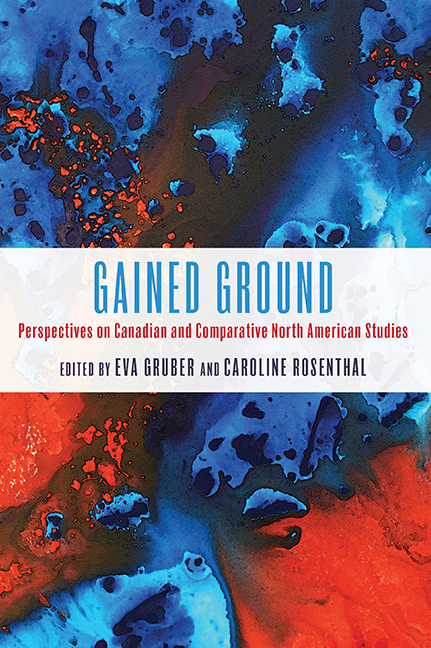Book contents
- Frontmatter
- Contents
- Preface and Acknowledgments
- Introduction
- Part I The Genesis of Canadian and Comparative North American Studies
- Part II Comparative North American Studies: Literary Case Studies
- Part III Comparative North American Studies beyond Print
- Comparative North American Opera: Individualism and National Identity
- “Who Really Lives There?”: (Meta–)Tourism and the Canada Pavilion at Epcot
- Contact Prints: Reading Margaret Atwood's The Door and the MaddAddam Trilogy through the Lens of Photography
- Cup–idity, or Poetic Larceny in Transatlantic Contexts: Margaret Atwood's “Stealing the Hummingbird Cup”
- Part IV Coda: Reingard Nischik and Transatlantic Canadian Criticism
- Index
Contact Prints: Reading Margaret Atwood's The Door and the MaddAddam Trilogy through the Lens of Photography
from Part III - Comparative North American Studies beyond Print
Published online by Cambridge University Press: 26 October 2019
- Frontmatter
- Contents
- Preface and Acknowledgments
- Introduction
- Part I The Genesis of Canadian and Comparative North American Studies
- Part II Comparative North American Studies: Literary Case Studies
- Part III Comparative North American Studies beyond Print
- Comparative North American Opera: Individualism and National Identity
- “Who Really Lives There?”: (Meta–)Tourism and the Canada Pavilion at Epcot
- Contact Prints: Reading Margaret Atwood's The Door and the MaddAddam Trilogy through the Lens of Photography
- Cup–idity, or Poetic Larceny in Transatlantic Contexts: Margaret Atwood's “Stealing the Hummingbird Cup”
- Part IV Coda: Reingard Nischik and Transatlantic Canadian Criticism
- Index
Summary
COMMENTING ON THE RELATION between her poetry and her novel writing, Margaret Atwood has described her poems as sometimes resembling doors that open up to corridors in the house of fiction. That is to say, a theme or idea first explored in the dense, crystalline form of a poem, Atwood claims, might re-emerge in the extensive narrative space of her novels: “Only after I've finished the novel can I say, Well, this poem was the key. This poem opened the door” (VanSpanckeren 2013, 129– 30, originally in Morris 2006, 143). In the aptly named The Door from 2007—Margaret Atwood's latest poetry collection to date—the title thus points the reader not just to the poems at hand and to their recurring concern with thresholds, passages, and transitions, but also to Atwood's post-apocalyptic novels of recent years, notably the MaddAddam trilogy, and to common themes of environmental crisis and a civilization on the brink of self-inflicted catastrophe. Published between the first and second installment of the trilogy (Oryx and Crake appeared in 2003, The Year of the Flood in 2009, and MaddAddam in 2013), The Door in fact invites a comparative perspective that sees the two genres—fiction and poetry—in a thematic dialogue, with the poetry, as Kathryn VanSpanckeren has put it, “spawn[ing] an uncanny brood” in the fictional worlds of the novels (2013, 131).
While the MaddAddam trilogy has received much attention among literary critics and a general reading public, Atwood's return to poetry in The Door—the genre that started her career and brought her critical recognition with the Governor General's Award-winning The Circle Game (1964)—remains underexposed in critical discourse. Revisiting Atwood's poetry, this essay will read The Door for its representation of and engagement with environmental crisis, disastrous events, and personal tragedy, with a focus on two exceptional poems from the collection that draw on photography and photographic discourses in this context. The close readings of Atwood's poetry will then be contrasted with her post-apocalyptic trilogy, again by comparing the discussion of photography in selected poems with exemplary photographic discourses in the novels. The essay hence seeks to access Atwood's poetry in The Door as well as her postapocalyptic novels from the perspective of her career- and genre-spanning commitment to the medium of photography and its digital reincarnations.
- Type
- Chapter
- Information
- Gained GroundPerspectives on Canadian and Comparative North American Studies, pp. 179 - 192Publisher: Boydell & BrewerPrint publication year: 2018



